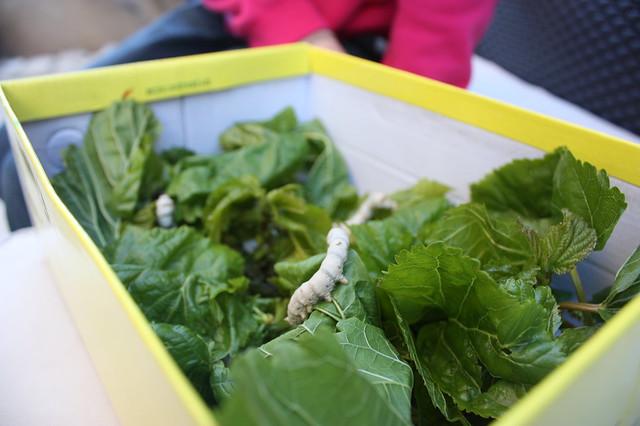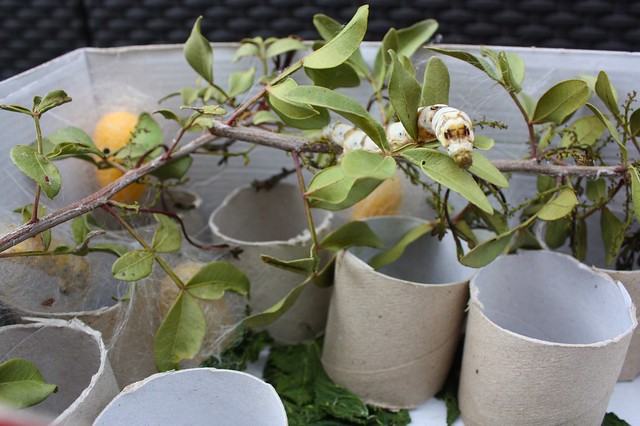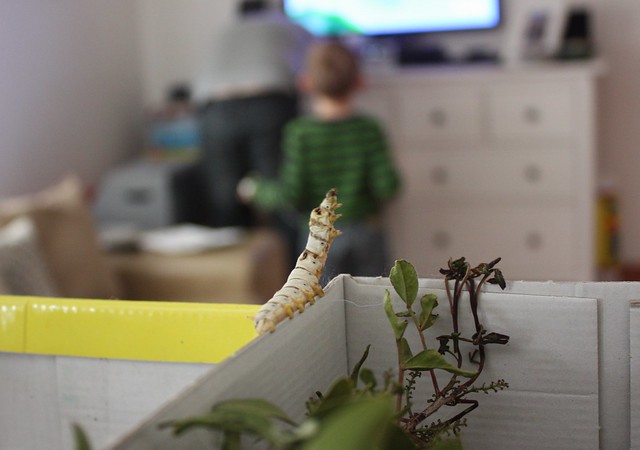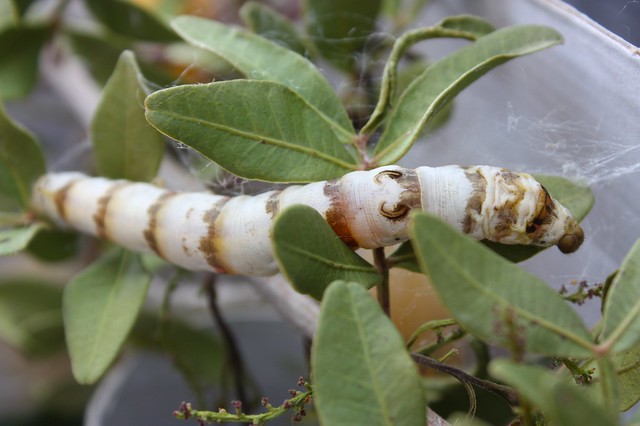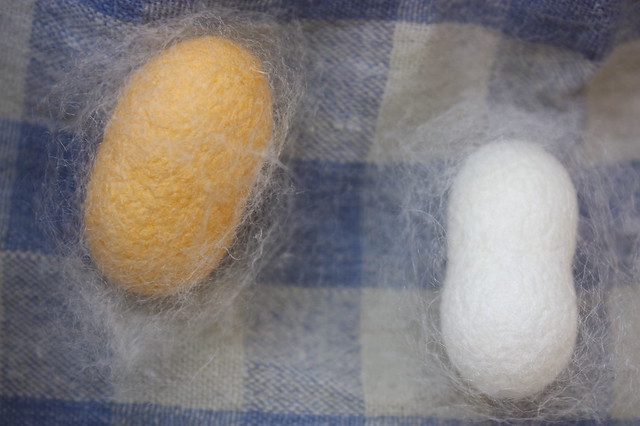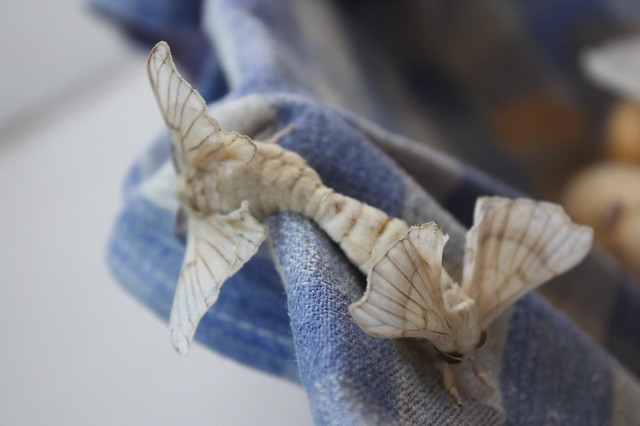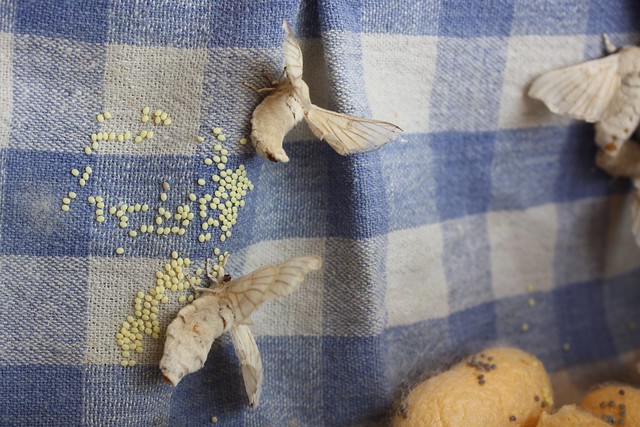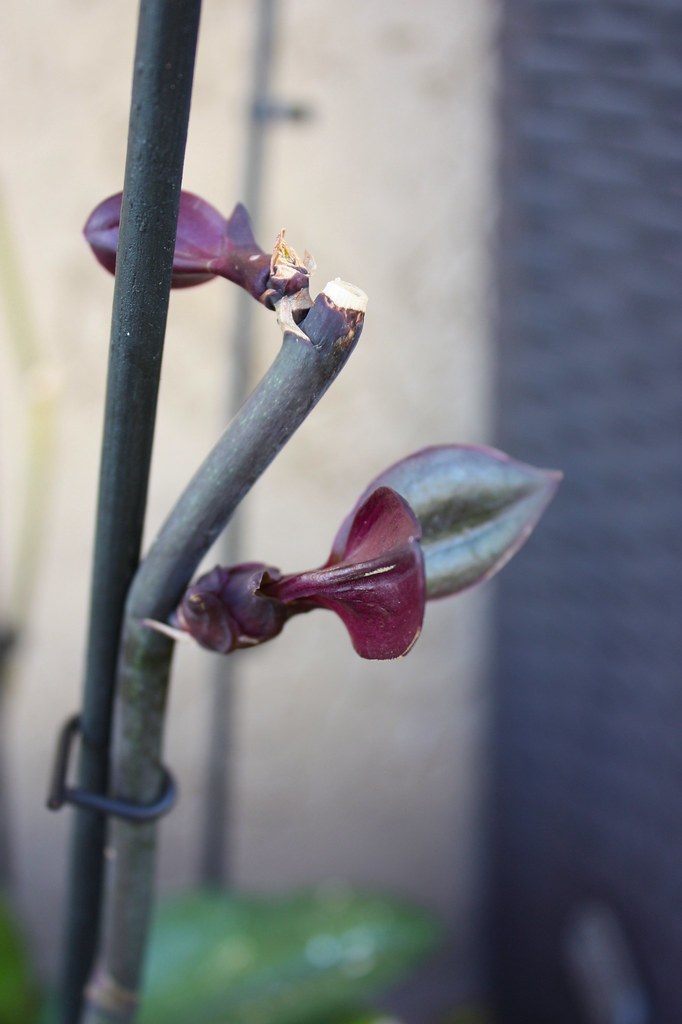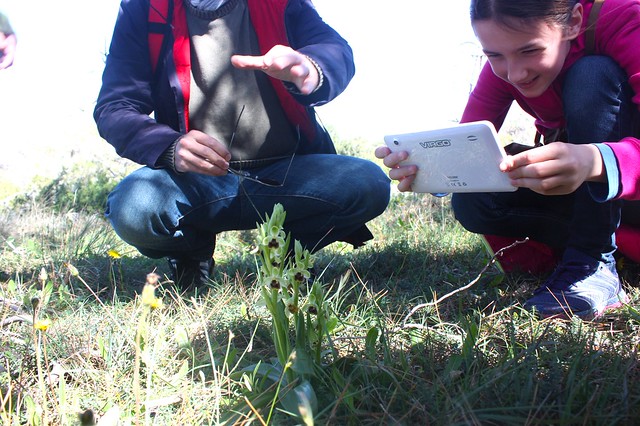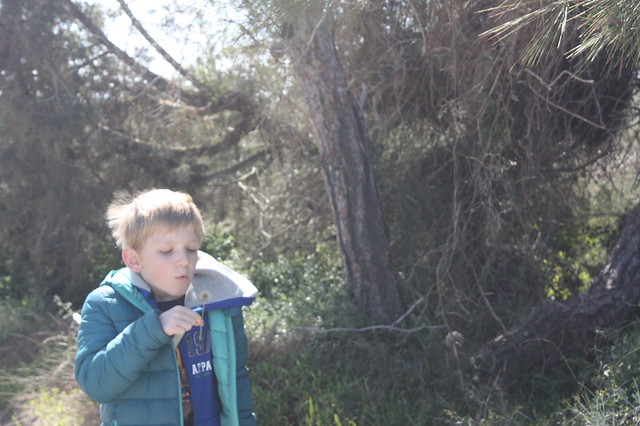We received nine silkwork larvaes to take care of from Eddies kindergarden just before summer holidays started. We fed them with Mullberry tree leaves which we found in the neighbouring area. For weeks they ate day and night. Then one day one by one did they start cocooning. They remained in their white and yellow cocoons for weeks. Covered in the softest silk thread, the metamorphosis took place. Then the beautiful silk moths came. Blind, not able to fly or eat they just mated and laid eggs until they slowly and peacefully started dying.
